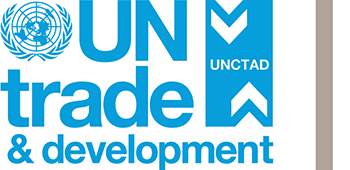The growth of developing economies is constrained by the performance of the external sector. Countries face an external constraint when their performance (current and expected) in external markets and the response of the financial markets to this (current and expected) performance delimit and restrict their scope for conducting domestic policies, including fiscal, exchange-rate and monetary policy. We argue that the main external constraint on growth is financial rather than determined by real factors as postulated by the literature on this subject. On this basis we provide an explanation of the decline in trend GDP growth in Latin America and the Caribbean based on the interaction between financial flows, more flexible exchange rate regimes, and the external indebtedness of governments and of the non-financial corporate sector. The interaction between these factors is mediated by five transmission mechanisms: (i) the sensitivity of bond prices to changes in interest rates; (ii) the positive and statistically significant correlation between nominal exchange rate variations and sovereign risk perceptions; (iii) the positive and statistically significant correlation between sovereign and corporate risk perceptions; (iv) the positive correlation between risk and debt; (v) the non-linear relationship between leverage and investment. These different components are pulled together in a macroeconomic consistent stock-flow model comprising four sectors: private, government, and external sectors, and a central bank. Our external financial restriction approach contrasts with the two broad type explanations have been put forward to explain the decline in growth in LAC. The first type focuses on external shocks/financial/balance of payments crises. The second type centers on the real sector and attributes the decline in growth to the failure of domestic policies to create the conditions for broad-based structural change towards higher value-added production.
